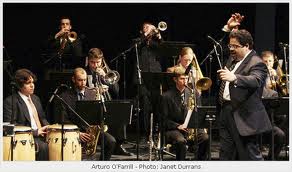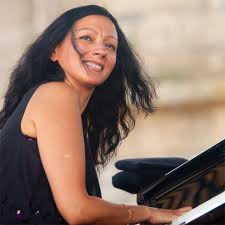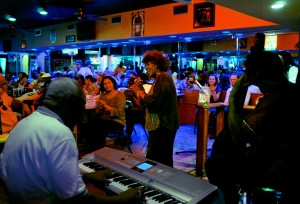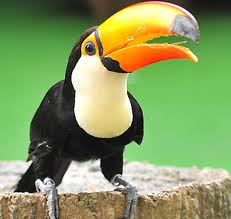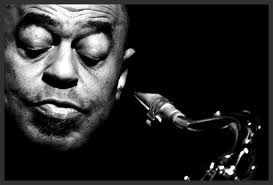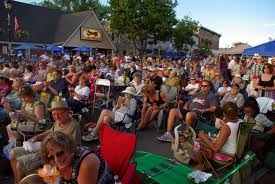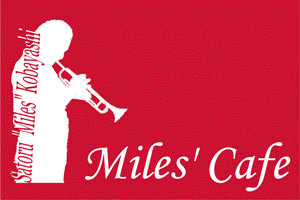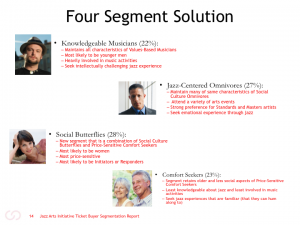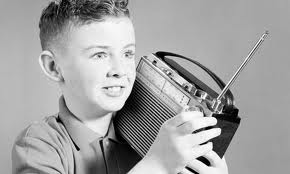Cuban-born, New York-resident drummer-composer Dafnis Prieto has been named a 2011 MacArthur fellow, an honor attended by $500,000 to do with as he pleases, doled out $100K a year for five years. Congratulations to Dafnis — who’s only been in the U.S. since 1999, when at age 25 he emigrated and joined reedist-composer Henry Threadgill’s ensemble. […]
NYC new music post-9/11 to fall 2011
“The decade that followed 9/11/2001 has been marked by jazz and new music makers’ determination not to be deterred from what the Taliban and Tea Party alike may consider marginal activities, if not outright affronts to God’s dominion,” I write in my latest CityArts column. “Whether the city suffers attacks from abroad, natural disasters or economic collapses […]
The Azeri-Euro-Ameri-jazz 9/11 suite
Pianist Amina Figarova, from Azerbijan via Rotterdam to Astoria, Queens, composed September Suite in response to 9/11/01 — one of many works by musicians of all leanings and backgrounds created in response to the violent events of a decade ago. She and her sextet with Belgian flutist Bart Platteau, her husband, give the New York premiere […]
Congrats to Sonny Rollins
Saxophonist supreme Sonny Rollins turns 81 today, and was announced as recipient of 2011 Kennedy Center honors. He really deserves it: he’s been a beacon of robust, smart, honest American music for more than 60 years. Surfing for clips, I found this of “Alfie’s Theme” from 1982, but there are many good ones from earlier and […]
Foundation to run the Chicago Jazz Fest?
The Labor Day weekend free Chicago Jazz Festival had multiple musical high points, like Mike Reed’s   Myth/Science Assembly, yet Chicago Tribune critic Howard Reich believes the fest is old and creaky, in dire need of reinvention, under a new, fest-dedicated Foundation. With new mayor Rahm Emmanuel facing an immense budget shortfall, Reich may be right that […]
Chicago jazz fest: taking audiences into neighborhoods
The Chicago Jazz Festival began Wednesday night with a club tour — busses the Chicago Trolley Company’s open-air vehicles carting hundreds of ticket-holders on interlocking routes stopping at music-rooms throughout town. Of five venues on the South Side, City Life Cocktail Lounge was my favorite. Singer June Yvon has held a weekly gig there for 19 […]
Call for Tweets! hashtag #jazzlives from Labor Day jazz fests
The #jazzlives Twitter hashtag campaign broadcasts on WHO was heard live-in-person and WHERE throughout the fast-growing social mediaverse. Over Labor Day weekend, with some two dozen jazz fests and parties throughout the States and neighbors, the audience for live jazz can use hashtag as a free and easy way to get the word out that […]
Online video Charlie Parker Jazz Fest, day 2
Hurricane Irene wiped out both days of NYC’s annual Charlie Parker Jazz Fest — but not the show of Archie Shepp, Anat Cohen, Gerald Clayton and Madeleine Peyroux available via YouTube. Here’s a dry, speculative approximation of what we missed (see yesterday’s post for the virtual fest with Toots Thielemans, James Carter, Tia Fuller and […]
Virtual Charlie Parker jazz fest (online video)
Fearing Hurricane Irene, New York City has suspended public transportation and cancelled everything — but not my  online video Charlie Parker Jazz fest, a humble audio/video standin for the live sets scheduled but not-to-be in Harlem and the East Village, Saturday and Sunday, Aug 27-28. Monday, Aug. 29 is the 91st birthday of the immortal alto […]
Labor Day Jazz & Blues fests coast-to-coast; how many listening?
Jazz and blues festivals occur in America coast-to-coast over Labor Day weekend — how many listeners will the music engage? Capacities vary: free multi-day fests in Chicago and Detroit attract tens of thousands each, and the free Memphis Music & Heritage Festival; River Front Jazz Fest in Stevens Point, Wisconsin; Franklin Jazz Festival outside Nashville, Tennessee;  Big Muddy Blues Festival at Laclede’s Landing near […]
Trademark “Miles” image? Estate sues jazz club
The Miles Jazz Cafe, a low-key, off-the-mainline music loft in midtown Manhattan, is being sued by the estate of trumpeter Miles Davis for copyright infringement, citing use of the musician’s silhouette as “free-riding on the goodwill associated with the Miles Davis marks” in a way “likely to mislead the public.” The perpetually photogenic Davis was […]
Jazz audience surveyed, segmented
The jazz audience can be described by its parts: hip, participatory young artist/musicians, less experienced and cost-conscious but willing social butterflies, mid-aged and older cultural omnivores and dull-but-desirable comfort seekers, according to a segmentation study sponsored by the Jazz Audience Initiative. Some of this has been reported by NPR’s A Blog Supreme as “Actually Useful Information About the Jazz Audience” (thanks, Patrick Jarenwattananon), […]
Newport Jazz Fest via NPR #: day 2 my live reviews
11:55 am — JazzBeyondJazz attends the Newport Jazz Fest today, Aug 7, by listening on NPR, and reviewing as here it happens (tweeting #newportjazz). Ten performances are scheduled over 7 hours, and I won’t listen to everything, but will chime in with info and responses to the music and the broadcast (and I invite comments, […]

